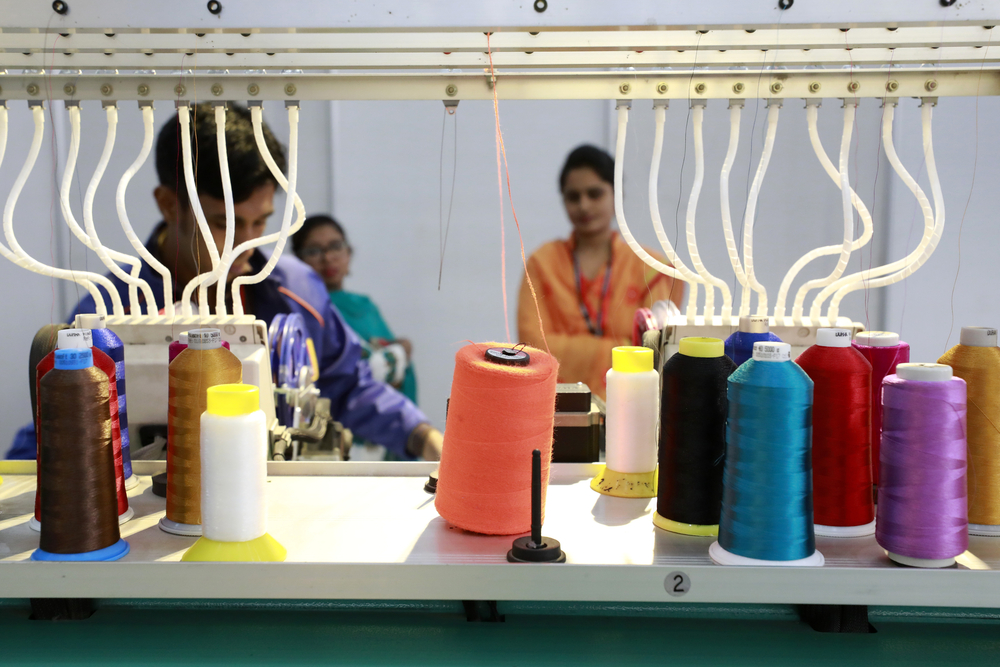How Reshoring And Onshoring Are Changing The Apparel Industry



One of the most in-demand companies nowadays is apparel manufacturing. The traditional apparel market is a global behemoth that is constantly expanding. It is estimated to reach 1,955 billion US dollars by 2026.
Apparel producers aim to develop their company in many ways to stay competitive. One of how apparel producers can beat their competitors is by having a head-strong apparel sourcing strategy.
Cost-effectiveness, reshoring, onshoring, and sustainability are the elements that buyers are focusing on today.
In a continuously changing climate, clothes firms and retailers' sourcing selections may make or break their business. Through the whole supply chain, effective sourcing provides increased efficiency and flexibility.
Manufacturers must prioritize factors like unexpected market trends and the customer impulse purchasing tendency to remain competitive in the apparel industry.
This article will highlight everything you need to know about sourcing and the different strategies that companies can leverage to make a boom in the apparel industry.
What is Apparel Sourcing?
It is all about finding a suitable market across the globe for the company’s goods and services. One of the types of apparel sourcing, called outsourcing, has taken momentum in the last few decades because of globalization.
Outsourcing moves a company's operations, goods, or services to another location. Everything from selling products or services to relocating a whole business division comes under outsourcing.
The process entails the outsourcing of operational tasks to value-added vendors. Outsourcing strives to reduce the length of the garment supply chain and the number of services provided domestically.
Outsourcing is a prevalent business technique, especially in the fashion sector, because labor is available more cheaply and at varying skill levels in other parts of the world.
Outsourcing may help boost market position on a strategic and functional level by reducing extra expenses.
What Are The Benefits Of Outsourcing?

- Customization
By outsourcing, a strong brand may rely on a business that helps large shops worldwide predict trends. Furthermore, this outsourced firm may create clothing customized to the brand's demands, ambitions, and desires.
Even great focus on the work decreases the dangers and expenditures that may develop and improves collections based on seasonal trends. Some outsourcing firms promote core collections via innovation, which helps them stand out from their competitors.
2. Reduced expenses
Subcontracting reduces inventory and working capital while increasing direct sales. This method lowers purchase amounts. It also helps in fast adaptability to changes in customer behavior patterns.
The logistical expenses that the brand has to handle directly can simplify. It also ensures that diverse collections exist inside the same collection, decreasing risk and increasing customer satisfaction—a generation's worth of competitive edge.
3. Trust and reliability
The apparel brand and the outsourced firms have a production partnership based on trust and reliability. When outsourcing, thorough quality control is performed and improved in the processes, as well as in the delivery and online times.
Let us explore the different types of outsourcing and understand how they are making a dent in the apparel market.
- What Is On-shoring?
Outsourcing to another city within the same nation is what onshoring means. Outsourcing is the practice of moving corporate processes inside a country's borders to a lower-cost area.
It is about moving a company's operations and labor costs to a lower-cost location. Employees can also work from home as a result of this. Furthermore, production coordination and communication are more effective and efficient.
It provides the following benefits:
- Low-cost travel
- Geographical closeness
- More development opportunities
- Services of higher quality
When it comes to the link between geography and outsourcing, onshoring is the best option. Apparel companies hire suppliers to execute inside the national boundary on a budget. It should be a part of any business' outsourcing strategy.
With advanced technology, onshoring makes greater economic sense since automation will boost worker productivity and offset increasing labor expenses. Many clothes companies and retail buyers evaluate automation capability when choosing a sourcing location.
The rest of the garment industry also needs to build the skills needed for advanced manufacturing among their personnel.
What are the disadvantages of onshoring?

- Limited talent pool
Outsourcing business to people in non-metropolitan parts of the nation can limit the availability of the talent pool. There may not be enough diversity of people available, and the hiring and training process might be tedious.
- Expensive
Nearshoring and offshore are less costly than onshoring. It can be a setback for smaller and newer enterprises that rely on a higher return on investment to stay afloat. Yet, various portions of a country charge less than larger urban areas.
- What is reshoring?
It pertains to businesses moving production and manufacturing back to the nation where the business was founded.
In other words, if a corporation has transferred part or all of its manufacturing activities overseas (offshoring) to save money on labor, reshoring brings them back.
Why Is Reshoring Necessary?
- Labor prices are rising, and transportation expenses are becoming exorbitant as countries globally, particularly in Asia, continue to expand. The cost difference between operating onshore and offshore is minor for some organizations, and the gap is narrowing every year.
- Reshoring means that most supply chain linkages will be in the same time zone, making them easier to manage. It also means more efficient workflows.
- When working overseas, firms may face challenges such as meeting material standards, quality control concerns and losing intellectual property rights. Reshoring activities imply that the same set of rules governs everything.
What Are The Benefits Of Reshoring?
- It gives businesses more control over the manufacturing process. Additionally, additional restrictions and standards may be necessary to guarantee consumers access to the finest quality items.
- The complexity of the supply chain reduces when operations come closer to home. It also provides the added benefit of lowering the hazards of shipping and customs. It also implies that you'll have more quick access to all the production processes.
- Consumers buy things made in their backyard. According to a survey conducted by Perception Research Services, consumers are more inclined to buy locally made items. Locally created objects are seen to be of higher quality by consumers, increasing the possibility that they will pay more for them.
What Are The Disadvantages Of Reshoring?
- High expense
The most significant drawback of reshoring is the high expense of relocating industrial activities from one nation to another. It demands thorough logistical preparation and administration for medium to large businesses. The initial expense of reshoring might far exceed any advantages if the shift fails to perform.
2. Having to start over
Many firms who moved their production bases to other countries will have to start again if they return to the United States or Canada. They may have lost all of their manufacturing infrastructures when they began offshoring.
3. It can hamper relationships with other companies
Suppose a significant American corporation decides to remove production from China or another outsourcing nation and relocate it back to the United States. In that case, it may jeopardize partnerships with offshore businesses.
These businesses may not be happy about suddenly laying off thousands of people. So, if the reshoring effort fails and the North American business needs to return to China for manufacturing, it might be significantly more problematic than the American company understands.
As a result, many businesses hire reshoring experts and consultants to help them plan and execute the change.
Conclusion
The apparel business is a thriving part of the global economy. In terms of income generation and job creation, the apparel sector is critical to developing a country's economy. Due to worldwide sourcing and intense price rivalry, the sector is undergoing significant changes.
Favorable demographic dynamics, rising disposable incomes, changing consumer behavior, and a significant move toward branded goods have all contributed to the global garment market's favorable growth.
Modern media, such as television and the Internet, keep consumers informed about current fashion trends. Apparel producers are using new business methods to boost commerce. The sector will grow by leaps and bounds, generating significant income and jobs.
Apparel companies may choose the best outsourcing based on their present condition and outsourcing ambitions. Some may prefer reshoring, while others may go for onshoring.
However, apparel outsourcing may not be a realistic choice for clothing firms that desire complete control over all parts of the design, development, and manufacturing process.
Clothing enterprises with a standard product that can be readily copied and mass-produced, on the other hand, may find cost and time benefits in outsourcing the job to other factories or businesses.
Have any doubts or questions about reshoring and onshoring in the apparel industry? Contact us at Fashinza today!



















